 Food
Food  Food
Food  History
History 10 Odd Things Colonial Americans Kept at Home
 Weird Stuff
Weird Stuff 10 Superstitious Beliefs That Once Consumed Entire Cultures
 History
History 10 Bizarre Friendly Fire Incidents in Military History
 Technology
Technology 10 Modern Technologies That Accidentally Imitate Ancient Magic
 Mysteries
Mysteries 10 Mysteries of the Human Genome
 Weird Stuff
Weird Stuff 10 Things So Rare They’ve Only Been Found Once
 History
History 10 Legends Whose Last Moments Undid Their Glory
 Health
Health 10 Futuristic Ideas to Treat Common Medical Problems
 Weird Stuff
Weird Stuff Ten Surreal Attempts to Reverse Baldness
 Food
Food 10 Everyday Foods You Didn’t Know Were Invented by the U.S. Military
 History
History 10 Odd Things Colonial Americans Kept at Home
 Weird Stuff
Weird Stuff 10 Superstitious Beliefs That Once Consumed Entire Cultures
Who's Behind Listverse?

Jamie Frater
Head Editor
Jamie founded Listverse due to an insatiable desire to share fascinating, obscure, and bizarre facts. He has been a guest speaker on numerous national radio and television stations and is a five time published author.
More About Us History
History 10 Bizarre Friendly Fire Incidents in Military History
 Technology
Technology 10 Modern Technologies That Accidentally Imitate Ancient Magic
 Mysteries
Mysteries 10 Mysteries of the Human Genome
 Weird Stuff
Weird Stuff 10 Things So Rare They’ve Only Been Found Once
 History
History 10 Legends Whose Last Moments Undid Their Glory
 Health
Health 10 Futuristic Ideas to Treat Common Medical Problems
 Weird Stuff
Weird Stuff Ten Surreal Attempts to Reverse Baldness
10 Ways The Bible Was Influenced By Other Religions
If you are among the approximately 32 percent of the world population that considers themselves Christian, you were probably raised to believe that the Bible was written in some sort of historical vacuum—the various authors being inspired by God alone and having no outside influences whatsoever. However, the many books that make up the Bible were, in fact, written by a number of different authors, some of whom are unknown. And these men were influenced in a variety of ways. This is in accordance with historical patterns, and connections to older references can be found in almost any other religious and or historical text. Although this topic has been much debated, it’s commonly accepted by scholars today that the following parts of the Bible may have been influenced by other cultures:
10 The story of the Garden of Eden

In the Persian scriptures of the Zoroastrians, the Avesta tells the story of how Ormuzd created the world and the first two humans in six days and then rested on the seventh. The names of these two human beings were Adama and Evah. These texts date back as far as the 10th century B.C.
There is also a lot of evidence that the Epic of Gilgamesh, one of the oldest recorded texts in human history, had an influence on the biblical creation story. The Epic of Gilgamesh tells the story of a man, Enkidu, who was created from the earth by a god. He lives amongst the animals in a natural paradise until he is tempted by a woman, Shamhat. He accepts food from this woman and is forced to leave the place where he lives after becoming aware of his own nakedness. Later in the epic, he encounters a snake which steals a plant of immortality from him. Obviously, there are a lot of parallels between this story and the Graden of Eden from the Bible.
9 The Story of the Great Flood

A man is warned of an imminent flood by a god and is instructed to build a large boat in order to survive. The dimensions of the boat are 120 cubits; the building materials are wood, pitch, and reeds; and there are six decks. After the flood, the boat lands on a mountaintop where the man sends out a series of birds to find dry land. He eventually lets all the people and animals free and sacrifices to the god that saved him.
Now although these details sound like they were taken directly from the book of Genesis, you’d find the same information in the story of Utnapishtim, found in the Epic of Gilgamesh.
8 The Book of Proverbs
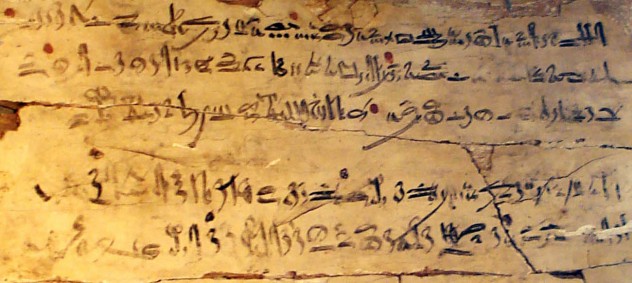
There are a large number of striking similarities between the book of Proverbs in the bible and the Egyptian Instruction of Amenemope. Though all surviving texts of the Instruction of Amenemope are of a later date, the works are thought to have been composed during the 12th dynasty. There has been much debate on this topic, but modern scholars agree that there is enough compelling evidence to support the originality of the Instruction of Amenemope. Here are a few examples of the parallel verses:
Proverbs 22:17-18: “Incline thy ear, and hear the words of the wise: and apply thy heart to my doctrine. Which shall be beautiful for thee, if thou keep it in thy bowels, and it shall flow in thy lips.”
Amenemope ch1: “Give thine ear, and hear what I say, And apply thine heart to apprehend; It is good for thee to place them in thine heart, let them rest in the casket of thy belly; That they may act as a peg upon thy tongue.”
Proverbs 22:22: “Do no violence to the poor, because he is poor: and do not oppress the needy in the gate.”
Amenemope ch1: “Beware of robbing the poor, and oppressing the afflicted.”
Proverbs 23:1: “When thou shalt sit to eat with a prince, consider diligently what is set before thy face.”
Amenemope ch23: “Eat not bread in the presence of a ruler, And lunge not forward with thy mouth before a governor. When thou art replenished with that to which thou has no right, It is only a delight to thy spittle. Look upon the dish that is before thee, And let that (alone) supply thy need.”
7 The Ten Commandments
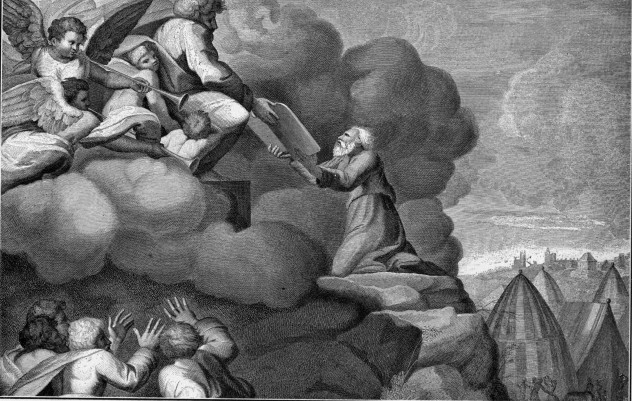
In the Bible, the Ten Commandments were given to Moses on Mount Sinai, and were written on stone tablets, allegedly by the hand of God himself. This was thought to take place around 1490 B.C. However when one examines chapter 125 of the Egyptian Book of the Dead (around 2600 B.C.), it seems he may have had a little help. The Egyptian Book of the Dead reads like the Ten Commandments written in the Negative Confession. Some examples are:
Book of the Dead: “I have not blasphemed.”
Exodus 20:7: “Thou shalt not take the name of the Lord thy God in vain: for the Lord will not hold him guiltless that shall take the name of the Lord his God in vain.”
Book of the Dead: “I have not committed adultery, I have not lain with men.”
Exodus 20:14: “Thou shalt not commit adultery.”
Book of the Dead: “I have not stolen.”
Exodus 20:15: “Thou shalt not steal.”
There is also some similarity between the story of the Ten Commandments and the Code of Hammurapi, dated around 1772 B.C.
6 The Canaanites
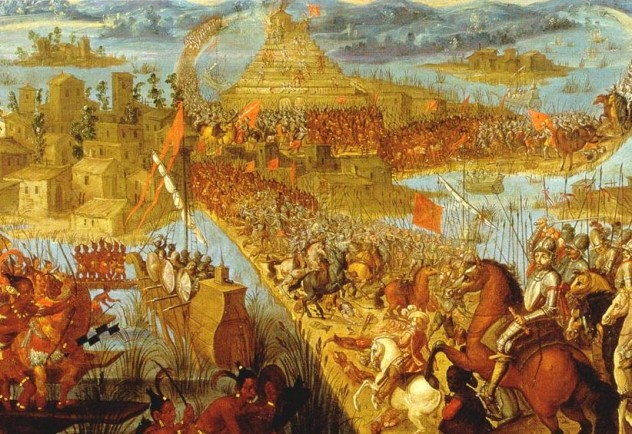
The origin of the Israelite nation is a little vague since the biblical accounts don’t always agree with archaeological evidence. According to the Bible, the Canaanites were a tribe of people who descended from Ham (the son of Noah). They were thought to be a cursed nation that the Israelites destroyed. However, conquests are never that simple, and it is widely accepted that the Canaanite religion had numerous influences on Judaism. Psalms 29 is a hymn that bears so much similarity to Ulgaritic (the language of the Canaanites) poetry that some believe that it was originally an hymn to Baal. Today scholars agree that the Israelites emerged from a Canaanite civilization in the early part of the second millennium B.C.
5 Isaiah
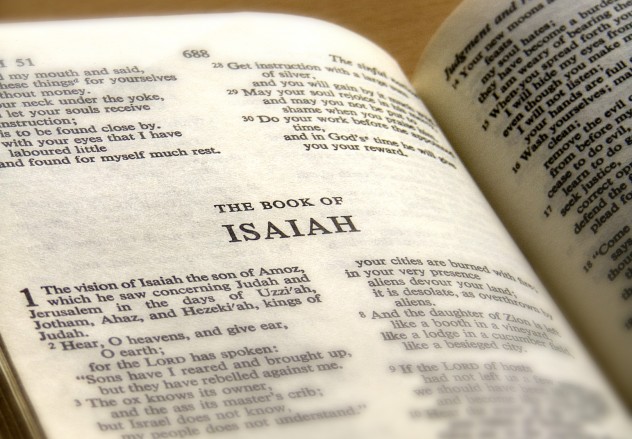
There is an interesting correlation between the Gathas of Zarathushtra Yasna (the sacred texts of the Zoroastrians) and the chapter of creation and book of Isaiah in the Old Testament. This can be largely attributed to the influence that the Mesopotamians held over the Israelites during the time the Israelites were living in Babylon. Strangely, the book of Yasna asks questions which are answered directly in the book of Isaiah. There are countless other examples of influences from Zoroastrianism, but this one is very compelling. Some examples of these similarities texts are:
Yasna 44.3 :4-5: “who made the routes of the sun and stars? By whom the moon waxes and wanes?”
Isaiah 40:26: “Lift up your eyes on high, and see who hath created these things: who bringeth out their host by number, and calleth them all by their names: by the greatness of his might, and strength, and power, not one of them was missing.”
Yasna 44.4:1-3: “who fixed the earth below and kept the sky above from falling?”
Isaiah 40:12: “Who hath measured the waters in the hollow of his hand, and weighed the heavens with his palm? Who hath poised with three fingers the bulk of the earth, and weighed the mountains in scales, and the hills in a balance?”
4 Angels and Demons

It must be clear by now that there were a number of ways that Judaism and Christianity have been influenced by Zoroastrianism. One of the primary examples is the existence, structure, and hierarchy of the angels and demons. According to scholars, the Zoroastrians were the first to believe in angels, the idea of Satan, and the ongoing battle between the forces of good and evil. Interestingly, Zoroastrian art portrays the prophet Zarathustra as being surrounded by the same halo of light in which Christian figures are often depicted.
3 Heaven and Hell

Along with the idea of good and evil, the concept of Heaven and Hell seem to predate Judaism as well. Once again, we go back Zoroastrianism and Persian influence. The prophet Daniel was the first biblical figure to refer to ideas of resurrection and judgement in Daniel 12:2, and this can be easily attributed to Babylonian influence. The word “paradise” comes directly from the Persian religion of Mithraism. The word “Hell” seems to derive from the Norse word Hel, most certainly a pre-Christian concept. There are countless examples of Hell-like afterlives portrayed in pagan mythology.
In the New Testament, there are four different words used to describe Hell, all of which have been translated into English as “Hell”. They are “Sheol”, which means “place of the dead”; “Hades,” the Greek god of the underworld, “Gehenna,” a kind of garbage dump; and “Tartaro,” which means “to cast” or “throw”.
2 The Trinity
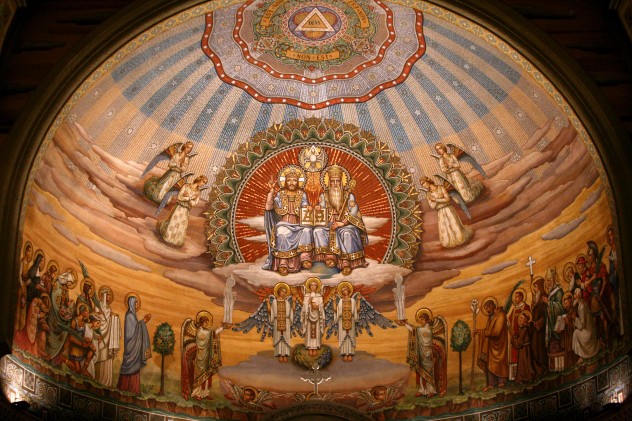
While the New Testament definitely mentions the concepts of the Father, Son, and Holy Spirit (Matthew28:19), it makes no actual mention of the word “trinity,” and there is still some contention as to whether the trinity god-head is a biblical theme. Judaism teaches pure monotheism, while Catholicism favors the trinity concept.
Yet it is clearly a concept that was influenced by pagan religions existing at the time that Christianity came about. Examples of pagan trinities are: Amun, Re, and Ptah of Egyptian Mythology; Anu, Enlil, and Ea of Sumerian Mythology; and Ishtar, Baal, and Tammuz of Babylonian Mythology.
1 Aspects of the Messiah

It is interesting to note the possible influence that other religions in existence at the time of Jesus may have had on his own philosophies. While the pagan aspects of the rituals surrounding Christian celebrations can easily be explained by the fact that these rituals were intended to replace pagan practices, the similarities in philosophy can only be explained through external influence. Although the fundamental aspects of the two religions differ greatly, there are still some remarkable parallels between the teachings of Jesus and the teachings of Buddha, Mithras, and Zarathustra.
Jesus: “And as you would that men should do to you, do you also to them in like manner.” (Luke 6:31)
Buddha: “Consider others as yourself.” (Dhammapada 10:1)
Jesus: “And to him that striketh thee on the one cheek, offer also the other. And him that taketh away from thee thy cloak, forbid not to take thy coat also.” (Luke 6:29)
Buddha: “If anyone should give you a blow with his hand, with a stick, or with a knife, you should abandon any desires and utter no evil words.” (Majjhima Nikaya 21:6)
Melloson Allen lives in a mountain valley in the far reaches of nowhere. She abhors stereotypes and loves the contrasts of diversity. Other interests include natural science, history and religious controversy.








